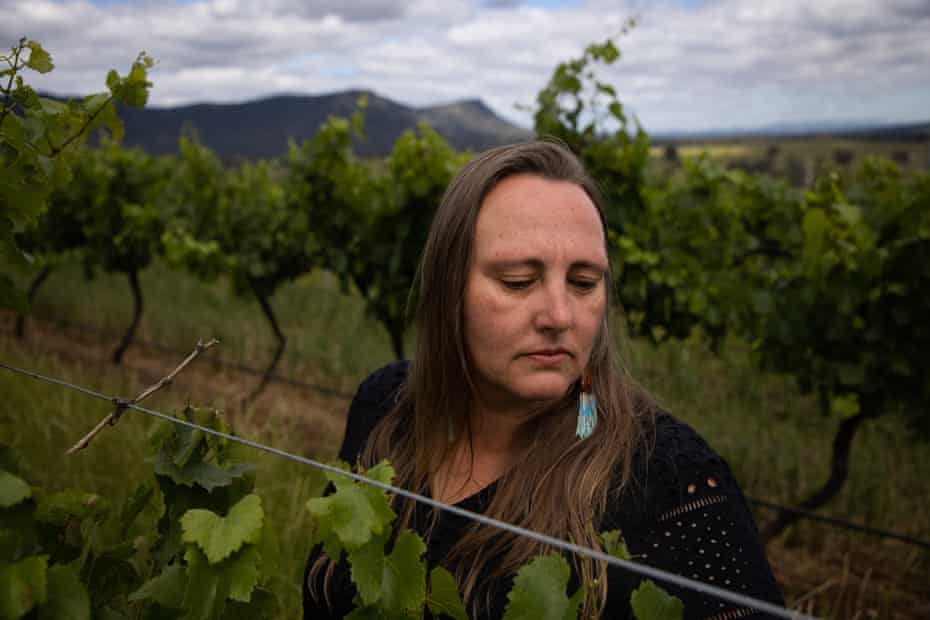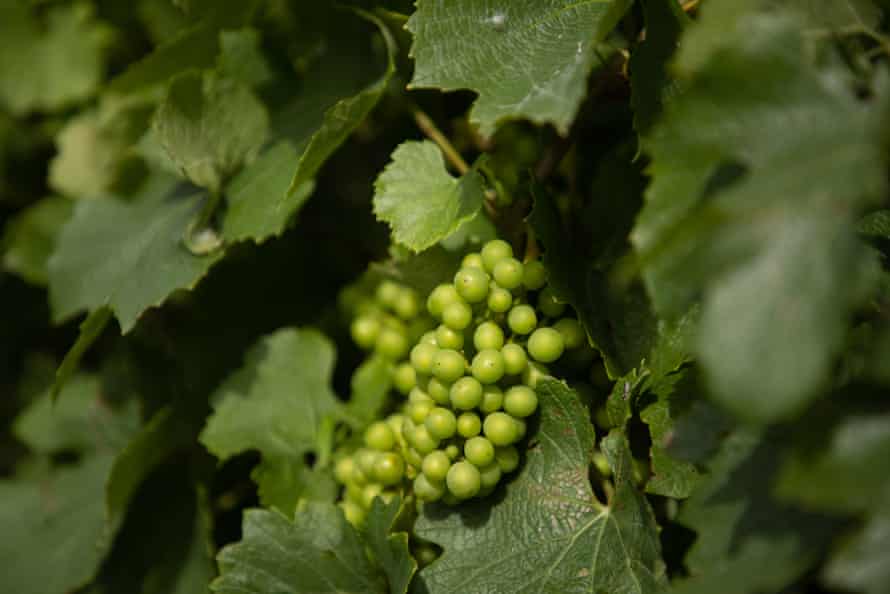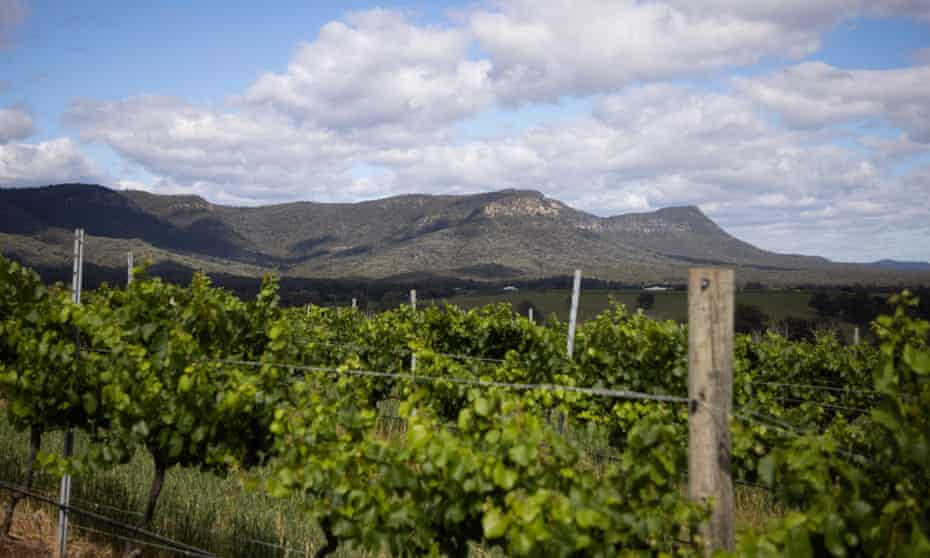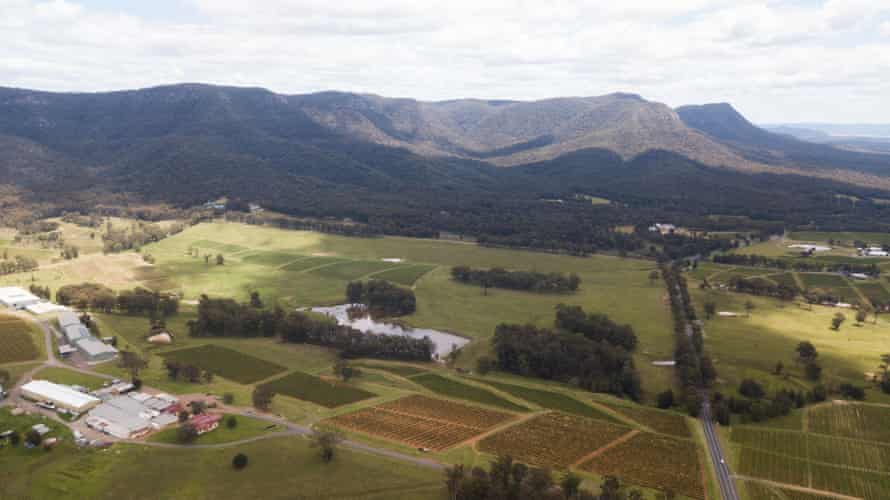A coalminer’s application for a lease in the middle of the grape-growing region has galvanised local opposition
The Broken Back Range has always loomed large in Sally Scarborough’s life.
She grew up in Cessnock in its foothills, amid wine country and the Great Dividing Range of the New South Wales Hunter Valley. But beyond the state forest lay rural farmland – and coalmines.
Now the national sales and marketing manager at Scarborough Wine Co, just north of Pokolbin, she fears her small oasis in the Lower Hunter is under threat from the further expansion of mining.
The Chinese-owned coal producer Yancoal has lodged an assessment lease for sites between Pokolbin and Broke-Fordwich, in the heart of wine country. It’s now before the NSW government.
Scarborough and a string of local wine producers and tourism operators see it as a call for action. They are fighting back against industrial development in the region, and are lobbying the NSW government to pass legislation to form a protective ring around the area – as has been done for the wine-producing Barossa Valley in South Australia and Margaret River in Western Australia.
“We are not going to take this lying down,” Scarborough says.
“This is my home. We don’t want to come up against this in 10 years’ time when there’s another exploration licence around … we want to stop its renewal so we don’t go through this process again and again.”


The Hunter Valley Protection Alliance launched its #NoMinesInOurVines campaign this month, arguing any future coalmines would destroy the $550m industry.
Scarborough has never aligned herself with “diehard conservationists”, but says people visiting the Hunter won’t see it as a beautiful, pristine area if there is mining “literally smack bang in the middle” of it.
“There’s no way viticulture and mining can cohabitate and work successfully together, there are too many divergences,” she says.
“One is an industry which is giving back to the natural environment and caring for it, producing product which holds a special place in people’s memories and hearts … that is at odds with mining.”
‘This would never happen in Champagne’
Yancoal is one of the largest export coalminers in Australia, operating 11 sites across NSW, Western Australia and Queensland. Five are in the Hunter Valley.
It acquired its first mine, Austar, in 2004. At the time, Austar was the only mine producing coal in the broader Cessnock area. It began transitioning to closure last year.
Since 2004, Yancoal has bought Hunter Valley Operations, Mount Thorley Warkworth, Ashton and Donaldson, all in the Hunter. Donaldson has also moved to a “care and maintenance” phase of operations.
The company’s major shareholder is Yanzhou Coal Mining Company Limited, which is majority owned by Yankuang Group, the fourth-largest coalmining state-owned enterprise in China.

Yancoal currently has interests in “several” early stage coal exploration and assessment sites in Australia, including drilling programs and geophysical surveys.
The company holds two exploration licences issued by the NSW government in the Cessnock area, and has applied for an assessment lease over the same footprint.
“The application process … requires several steps to be completed before it could actually be granted and this is likely to take several years,” a spokesperson said.
“An assessment lease, once granted, allows a works program that focuses on the assessment and study of a potential resource.
“If [an assessment lease] was granted it would not guarantee … a mining lease in the future. Should the potential for future mining ever arise, any mine proposal would have to undergo a rigorous assessment process … with significant public consultation.”
But Sasha Degen, owner of accommodation business Hunter Valley Stays, says even the prospect of mining in the region is “inconceivable”.
“I really can’t imagine any other wine region in the world would have this on the table, this would never happen in Champagne, the Napa Valley,” she says.
“People would be aghast to know there’s a mine in the middle of wine country … you don’t want to visit and drive straight into a mining truck.”


A report by the Australia Institute found coalmines in the Upper Hunter were running at 62% of their approved capacity last year, producing nearly 100m tonnes less than they were granted by the NSW government.
Institute research director Rod Campbell has said there is “absolutely no need” for any new coalmines in the Hunter. “Existing approvals can easily meet existing and likely future demand,” he says.
“The NSW government’s own data shows that Hunter coal sales peaked in 2014. The world has been telling us for years … it intends to use less coal in the future, but NSW governments haven’t been listening.”
A spokesperson for the department of regional NSW said two exploration licences for coal in the Cessnock region were originally granted in 2003 and 2010.
“Applications have been submitted to renew those existing licences and are pending determination,” the spokesperson said.
“If the proponent was to … consider mining, they would need to make a separate application, which would be considered through the state’s robust planning framework.”
‘We want to protect it for the next generation’
Degen says people use the term resilient “fluidly”, but points out that the Lower Hunter has just been through severe drought, fires, floods and Covid, “and now this”.
“We hear this loud and clearly when making reservations … guests are seeking world class food and wine, accommodation in a spectacular landscape. Noise, vibration and dust just isn’t part of the experience.”


In 2028 the Hunter Valley will celebrate 200 years as a wine-growing region. Degen says you “couldn’t reverse the damage that would be done” if the assessment lease receives the green light.
Chris Tyrrell’s family have grown vines on their property for 160 years – “about the same time as the mining industry”. Looking out of his window, Chris sees state forest on one side, and on the other a block of vines his great-great-grandfather planted in 1879.
“Part of being here that long is we’re not anti-coalmining as such, we’re just opposed to any new mines in the area. We’ve had lots of staff who’ve worked in both industries,” he says.
“But if they’re not running at full capacity now, it doesn’t make sense to open more.”
Tyrell says if the proposed site – on the main tourist route – were to be developed, it would “more or less mean the end of tourism”.
“As alarmist as that sounds … we get about two million people a year – having a coalmine and all the infrastructure on the main road would put an end to it.”
It’s not just about tourism.
“Sometimes you take it for granted, but we have some of the oldest vine resources in the world,” Tyrrell says.
“You can’t replace that. That’s what we’re looking after here, we want to protect it for the next generation.”